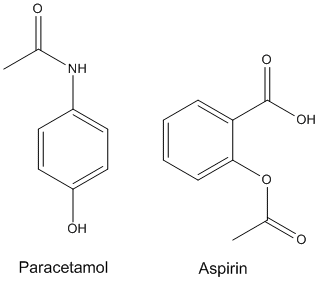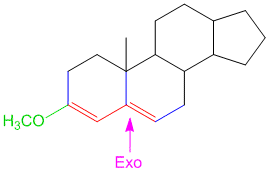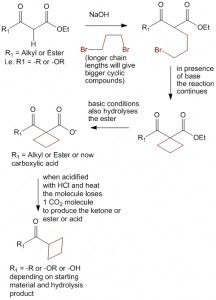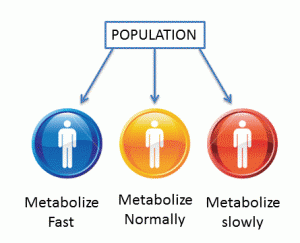Pharmacology
It is the science of drugs and its physical and chemical properties and their affect on the body and how they interact with other substances.
Pharmacology can be divided into 3 sections:
- Pharmacokinetics: deals with the absorption, distribution, biotransformation and excretion of the drugs and its metabolites from the body.
- Pharmacodynamics: deals with the biochemical and physiological effect of the drug as well as its mechanism of action.
- Pharmacogenetics: is the study of the role of genes in determining the drug metabolism.
Drug
A drug is anything chemical that enters the body and has some physiological effect on the body. It is not necessarily a compound that provides a therapeutic effect.
A drug is a molecule that has a specific action on the body that is independent of its source – synthetic or natural.
Drugs can be used for treatment as follows:
- Cure and hence taken only for a short period of time e.g. antibiotics Control and needs to be taken long term e.g. Insulin
- Alleviate symptoms and these do not cure e.g. analgesics.

Naming of a Drug
Chemical Name
Derived from the drugs chemical structure and used very rarely. For example the chemical name for paracetamol is N-(4-hydroxyphenyl)acetamide.
Generic Name
Is the official simplified chemical name of a drug and describes the most active constituent of the medicine. For e.g. the generic name of paracetamol is acetaminophen.
Brand Name
Is the commercial name under which the drugs are sold. Patent laws apply and can be used only by the company that has registered it. For e.g. tylenol is the brand name of paracetamol.
Group Name
Describes the drug class to which the drug belongs and this name also reflects the pharmacological action of the drugs or the therapeutic area of the drug action. For e.g. analgesic is the group name for paracetamol.
Side effects and adverse effects of the drugs
Side effects are the physiological effects that are not related to the desired drug effect. They are predictable. They are unavoidable since the action of the drug may not be highly targeted and influence other organs or tissue parts.
Adverse reaction or adverse effects: are more severe than the side effects and is an undesirable effect of the drug that can range from mild to severe toxicity and hypersensitivity reaction and anaphylaxis. All such reactions should be documented and reported for further analysis. In New Zealand these are documented with the Centre of Adverse Reaction Monitoring (CARM).
Drug Action
Therapeutic Dose
Is the smallest amount that will elicit a response and the largest dose that can be tolerated without excessive side effects.
Therapeutic Window
Is the gap between the dose needed to produce its effect in 50% of the population and that needed for the undesired effect.
Therapeutic Index
Estimates the margin of safety of the drug.
- Narrow: means a narrow margin of safety e.g. Gentamicin, digoxin
- Broad: means a wide margin of safety. E.g aspirin.
Therapeutic drug monitoring is necessary for drugs with a narrow therapeutic index and the reason for this is that the gap between the amount of drug required for a therapeutic effect and the amount of drug that causes unwanted effects is very small. Hence when these drugs are given from one patient to another their effect may vary and hence needs to be monitored each time to ensure that the drug is having a therapeutic effect and not a adverse reaction. Drug monitoring may vary from person to person. When a person has just started the medicine drug monitoring will be more rigorous.
Prescription drugs
Are medicines that need to be prescribed by an authorized person such as Midwives, nurses, pharmacists, physiotherapists, doctors.
Over the counter drugs
Are available to general public in the pharmacy and the supermarkets.
Pharmacy
Only drugs: can be sold in a community or hospital pharmacy and in an isolated shop that is licensed to sell such drugs. Different to restricted drugs as these medicines can be sold without prescription, but should be sold only by a registered pharmacist and should be recorded.
Tolerance
Decreased response to the drug and it is when the dose of the drug should be increased to achieve the same effect.
Dependence
Is when the patient needs the drug to function normally. Two types of dependance:
- Physical dependence: develops with an ongoing exposure e.g. cancer patient
- Psychological dependence: is when the persons mind says that “ I need the drug” e.g. cup of coffee.
Withdrawal
Occurs when no longer the drug is given to a patient and the side effects of not getting the drug are visible.
References
- Goodman & Gilman’s The Pharmacological Basis of Therapeutics by. Joel Griffith Hardman, Lee E. Limbird, Alfred G. Gilman. 10th Ed.
- Rang & Dale’s Pharmacology by. Humphrey Rang, Maureen Dale, James Ritter, Rod Flower. 6th Ed.



